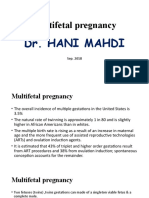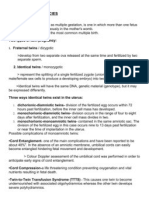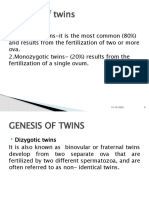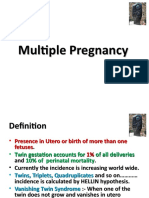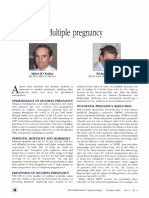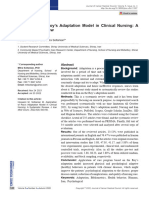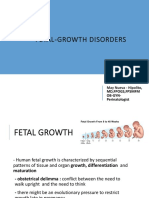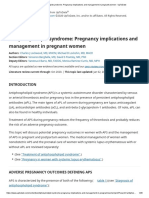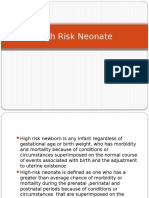0% found this document useful (0 votes)
47 views14 pagesMultiple Pregnancy
This document discusses multiple pregnancies, which refers to when a woman carries more than one fetus. Key points include:
- Multiple pregnancies can be twins, triplets, or more. Risks of morbidity and mortality are higher than singleton pregnancies.
- The rise in multiple pregnancies is primarily due to increased use of fertility treatments.
- Zygosity refers to genetic makeup, while chorionicity indicates placental membrane status. Determining chorionicity is important for management and outcomes.
- Diagnosis involves clinical evaluation like uterine size and heartbeats, as well as ultrasound to confirm numbers, chorionicity, and check for anomalies.
- Sonography allows for early detection
Uploaded by
Anusha AkhilCopyright
© © All Rights Reserved
We take content rights seriously. If you suspect this is your content, claim it here.
Available Formats
Download as PDF, TXT or read online on Scribd
0% found this document useful (0 votes)
47 views14 pagesMultiple Pregnancy
This document discusses multiple pregnancies, which refers to when a woman carries more than one fetus. Key points include:
- Multiple pregnancies can be twins, triplets, or more. Risks of morbidity and mortality are higher than singleton pregnancies.
- The rise in multiple pregnancies is primarily due to increased use of fertility treatments.
- Zygosity refers to genetic makeup, while chorionicity indicates placental membrane status. Determining chorionicity is important for management and outcomes.
- Diagnosis involves clinical evaluation like uterine size and heartbeats, as well as ultrasound to confirm numbers, chorionicity, and check for anomalies.
- Sonography allows for early detection
Uploaded by
Anusha AkhilCopyright
© © All Rights Reserved
We take content rights seriously. If you suspect this is your content, claim it here.
Available Formats
Download as PDF, TXT or read online on Scribd
/ 14















